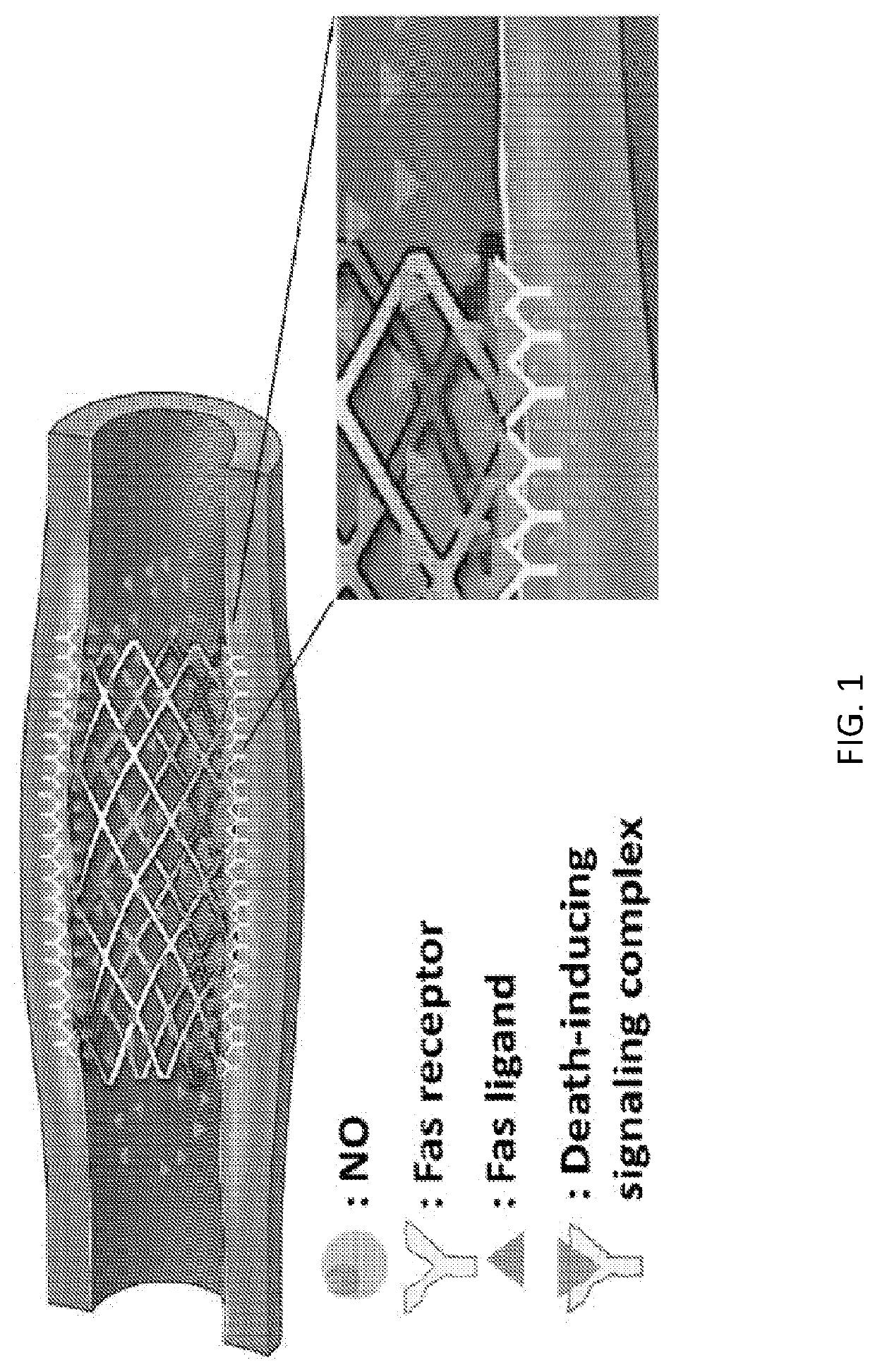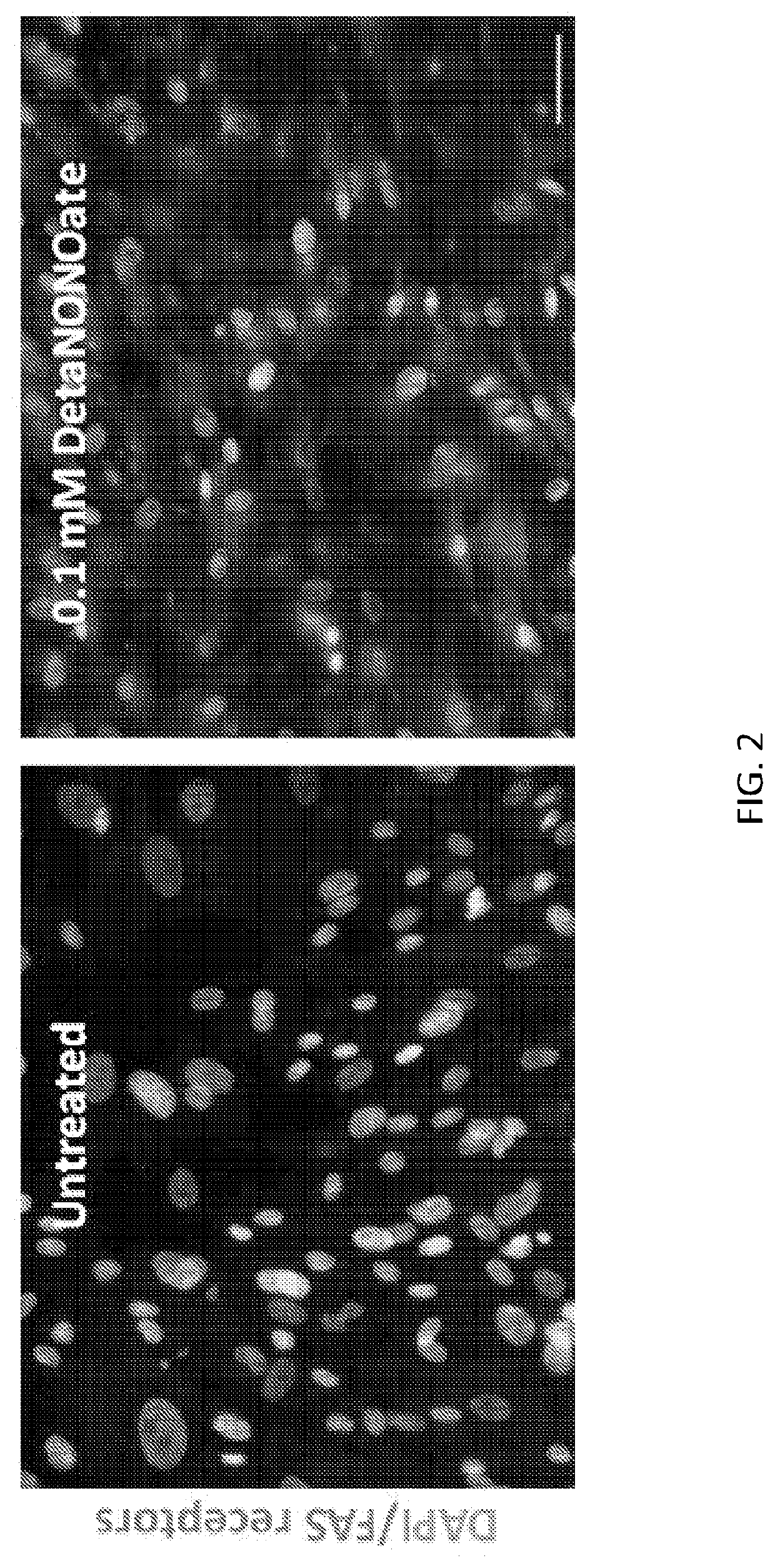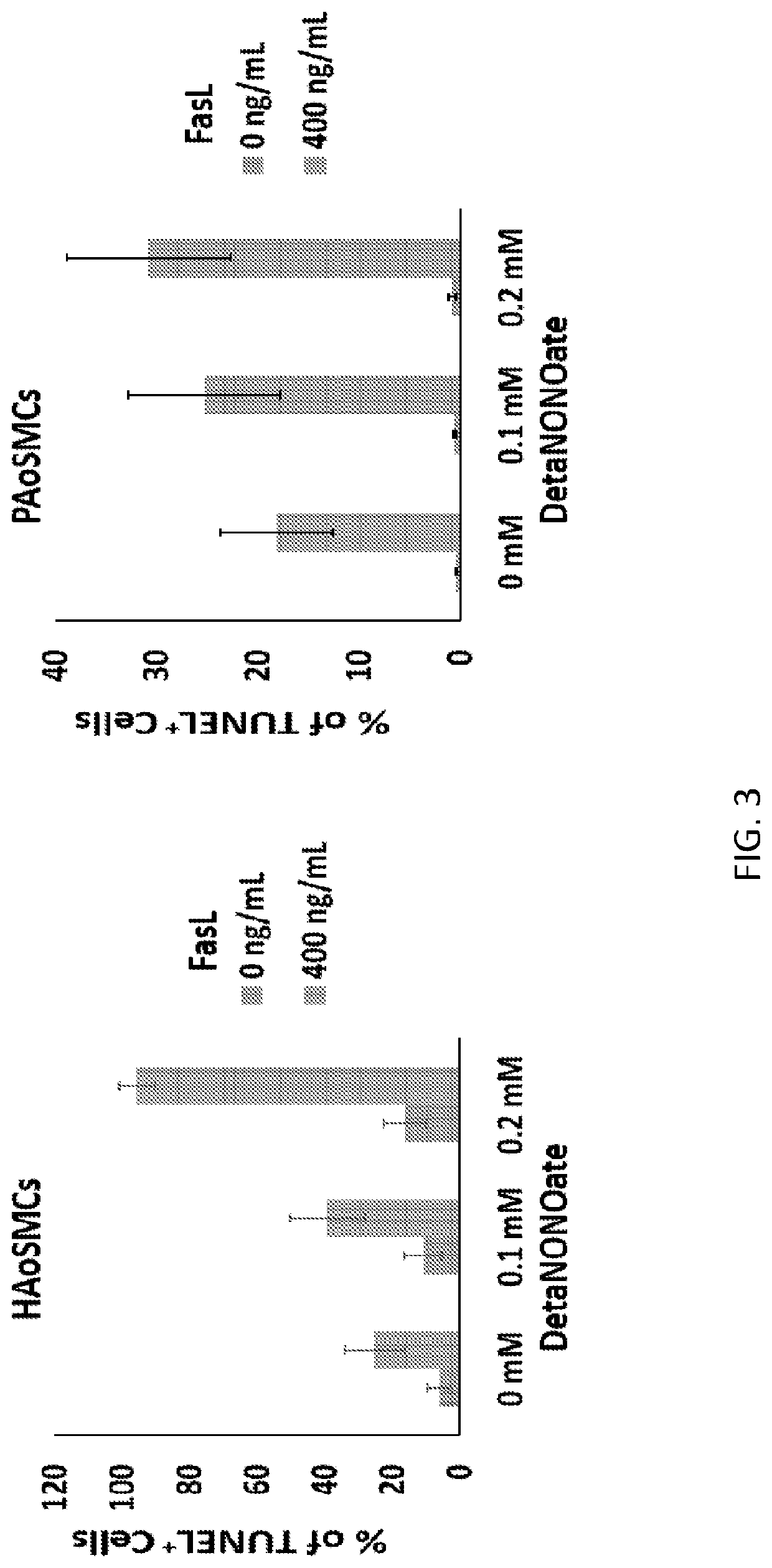Nitric oxide- and fas ligand- eluting compositions and devices and methods of treatment using same
a technology of nitric oxide and fas ligandeluting compositions and compositions, applied in the direction of peptide/protein ingredients, prosthesis, catheters, etc., can solve the problems of prolonged anti-platelet therapy following stent deployment, in-stent restenosis, and prolonged exposure of thrombogenic stent struts to the patient's bloodstream
- Summary
- Abstract
- Description
- Claims
- Application Information
AI Technical Summary
Benefits of technology
Problems solved by technology
Method used
Image
Examples
experimental examples
[0071]The invention is now described with reference to the following Examples. These Examples are provided for the purpose of illustration only, and the invention is not limited to these Examples, but rather encompasses all variations that are evident as a result of the teachings provided herein.
example 1
The Combination of FasL and NO Induces Apoptosis in Smooth Muscle Cells (SMCs) without Damaging Endothelial Cells (ECs)
[0072]Both local delivery of FasL, and increasing the Fas receptors on the surface of the target cells, can increase the efficiency of FasL-mediated apoptosis. Nitric oxide (NO) is known to increase surface Fas receptors on vascular SMCs (Fukuo et al., Hypertension, 1996. 27(3 Pt 2): p. 823-6; Boyle, Weissberg, and Bennett, Arterioscler Thromb Vasc Biol, 2002. 22(10): p. 1624-30). This was demonstrated herein when cultured human aortic SMCs were treated with the NO donor DetaNONOate. After 24 hours of treatment with DetaNONOate, Fas receptor expression on SMCs was increased (red stain, FIG. 2, right panel).
[0073]Subsequently, cell culture studies demonstrated that local delivery of FasL and NO synergistically induced apoptosis in SMCs (FIG. 3). NO has a very short diffusion length of <200 μm in tissues—therefore, NO can induce an upregulation of Fas receptor on SMC ...
example 2
Drug Delivery and Stent Designs
[0078]One embodiment of the invention includes drug delivery using a stent with a biocompatible / nonabsorbable polymer coating. Ethylene-vinyl acetate copolymer (EVAc) is an FDA-approved polymer for drug delivery applications. It can be loaded with proteins such as nerve growth factor and albumin, and can provide sustained release of these proteins (Powell et al., Brain research 1990; 515(1-2): 309-11). In one embodiment of the present invention, EVAc is loaded with a nitric oxide donor (or nitric oxide conjugated proteins such as diazeniumdiolated- or s-nitrosylated-serum albumins) and Fas ligand (or any other molecule which interacts with Fas receptors and triggers apoptosis). The stents are then coated with the drug-loaded EVAc, such that the drugs (NO and Fas ligand) can be delivered over time from the surface of the stent.
[0079]Herein, NO donor DetaNONOate and recombinant human Fas ligand were mixed with Ficoll to obtain an inert powder, and EVAc p...
PUM
| Property | Measurement | Unit |
|---|---|---|
| diffusion length | aaaaa | aaaaa |
| concentration | aaaaa | aaaaa |
| concentrations | aaaaa | aaaaa |
Abstract
Description
Claims
Application Information
 Login to View More
Login to View More - R&D
- Intellectual Property
- Life Sciences
- Materials
- Tech Scout
- Unparalleled Data Quality
- Higher Quality Content
- 60% Fewer Hallucinations
Browse by: Latest US Patents, China's latest patents, Technical Efficacy Thesaurus, Application Domain, Technology Topic, Popular Technical Reports.
© 2025 PatSnap. All rights reserved.Legal|Privacy policy|Modern Slavery Act Transparency Statement|Sitemap|About US| Contact US: help@patsnap.com



